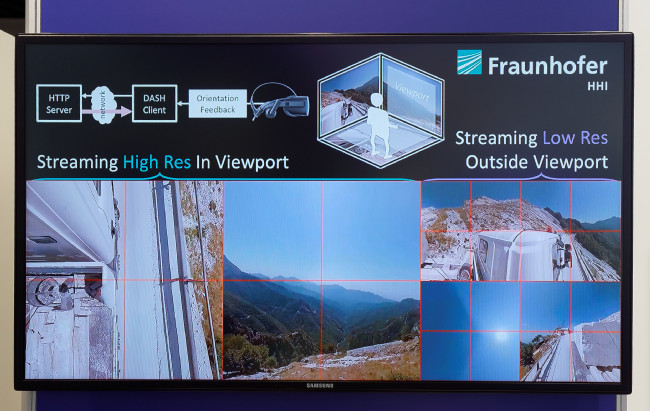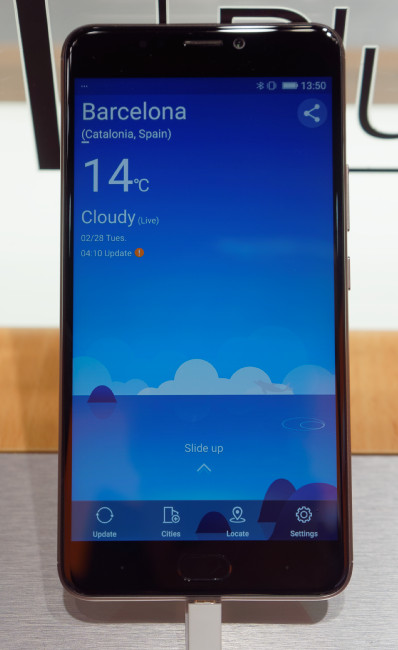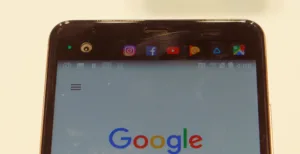Ericsson had a lot about automotive last year, but this year was focusing on 5G and the communications side. The company was demonstrating a Cisco Spark interactive display system. The company was showing that it could use Voice over LTE (VOLTE) which sends voice calls over a data network rather than using 2G or 3G and is cheaper for operators. Meanwhile, on its booth, Cisco was using Wi-fi calling for the same purpose. Ericsson told us that 50 operators globally are now using Wi-Fi calling (which is just like making a regular phone call) and 100 operators are now using Volte. An intriguing demo of the low latency and high bandwidth of 5G was a driving demonstration. Visitors could drive a small robot car that was actually going around a special track around 50 kilometres away from the show using cameras in the car to see where to drive. Another demo, developed with a UK university was showing remote medical procedures.
 Ericsson showed this remote driving application that exploits the low latency of 5G. Image:Meko
Ericsson showed this remote driving application that exploits the low latency of 5G. Image:Meko
The Fraunhofer HHI was showing how it is developing an implementation using MPEG-Dash and HEVC to offer video with variable resolution. Just as foveated rendering of 3D scenes can be more efficient than rendering the whole scene at maximum resolution, using information about where the viewer is looking can mean that a video stream can be created that optimises the resolution in the ‘ViewPort’ and cuts the bits in the peripheral areas, optimising the quality within a given bandwidth. The client device can use gaze tracking to request tiles at different resolutions. We asked if the same could be done for frame rates, but HHI told us that the saving would probably be very small and not worth the effort.
The HHI also told us that MPEG is working on an MPEG-I initiative to develop formats and coding for immersive media including audio. It hoped that the first proposals will be developed by the end of 2017.
 Fraunhofer HHI’s Foveated Video optimises compression if you know where the viewer is looking. Image:Meko
Fraunhofer HHI’s Foveated Video optimises compression if you know where the viewer is looking. Image:Meko
Gionee of China was showing its A1 and A1 Plus phones which have 5.5″ and 6.0″ FullHD 2.5D IPS displays. The A1 uses a Mediatek MT6755 Helio P10 chip, with 4GB/64GB of memory and storage. The camera is a 13MP unit with phase detection autofocus, while, unusually, the selfie camera has 16MP. Video is up to 1080P30. The A1 Plus uses a Mediatek MT6757T Helio P25 with the same memory. There are dual 12MP and 5MP main cameras and a 20MP selfie camera. The plus has a high capacity 4550 mAh capacity. At the moment, the phones are available in Nepal, India and China and are expected to come to Europe later in 2017.
 Gionee’s A1 PLus has a higher resolution on the selfie camera, than the main one. Image:Meko
Gionee’s A1 PLus has a higher resolution on the selfie camera, than the main one. Image:Meko

